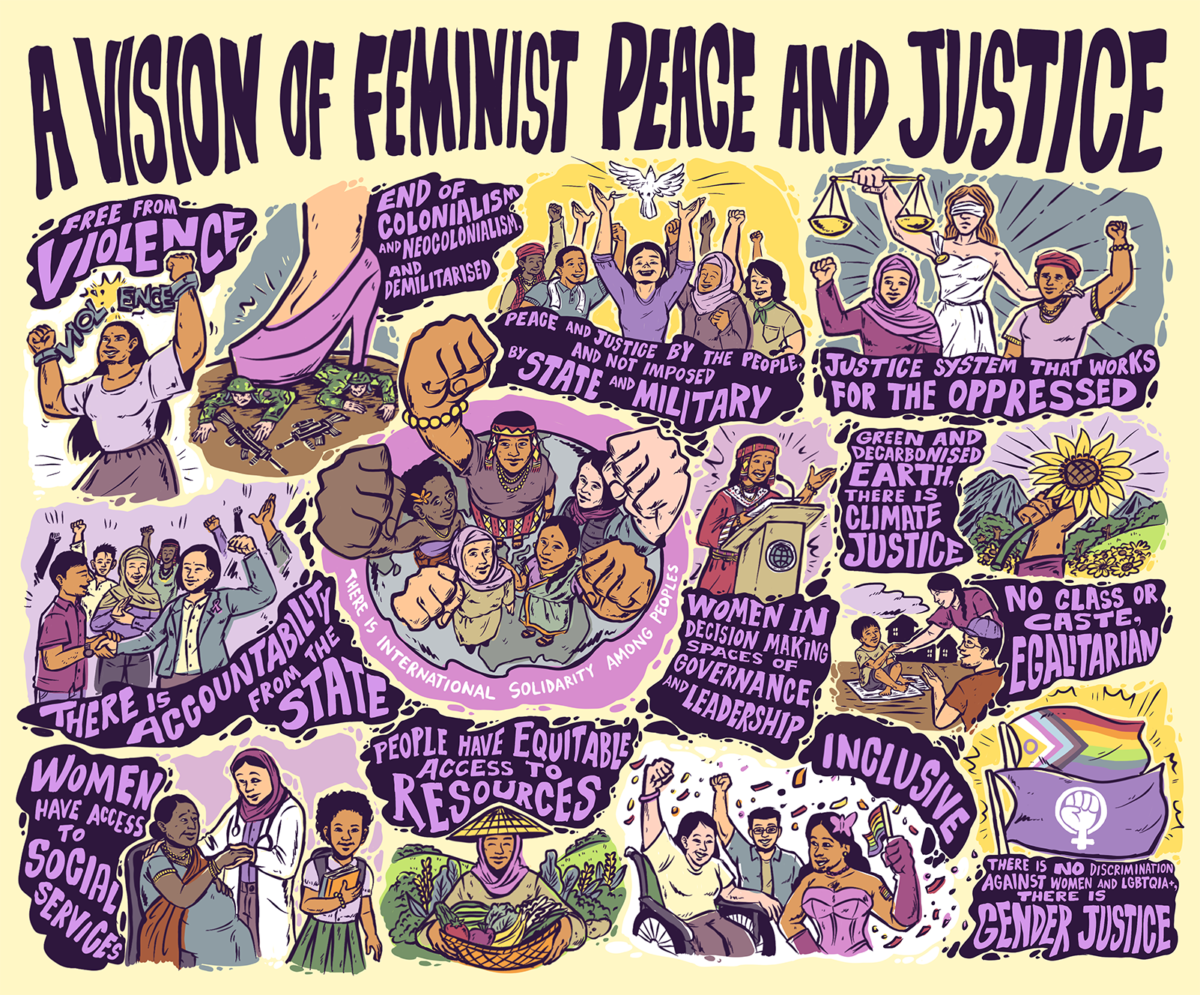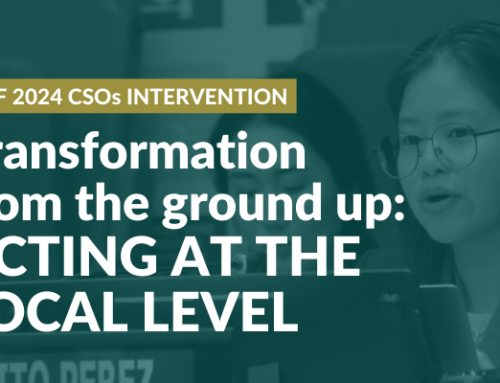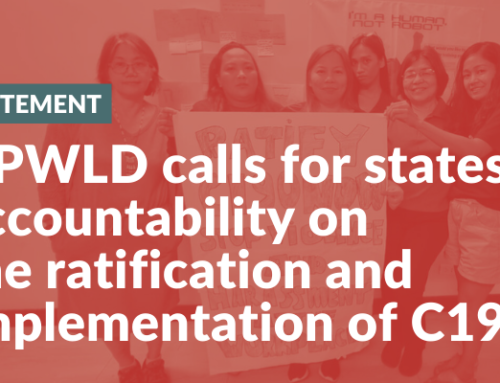Deprecated: File class-oembed.php is deprecated since version 5.3.0! Use wp-includes/class-wp-oembed.php instead. in /home/redaegri3gbc/public_html/wp-includes/functions.php on line 5573
As the scenes of massive human suffering continue to rattle our livestreams, and social media, it’s imperative more than ever to understand the exponential rise in militarism and its multifarious impacts on the lives of those on the margins, especially women. APWLD recently convened its members, partners and allies at the ‘Regional Convening on Militarism, Peace and Women’s Human Rights in the Asia-Pacific’ to unpack the phenomenon of militarism and analyse it from the standpoint of feminist peace and justice. The following reflects a brief summary of the discussions held.

Militarism as an ideology is closely interlinked with colonialism and imperialism especially in the way the eurocentric powers have controlled and continue to control the Global South. It is embedded in the geopolitical structure and designed to benefit the colonial powers. In 2018-2022, the five largest arms exporters (making up 76% of total volume) were the US, Russia, France, China and Germany. The US supplies 40% of the global share of arms, and its own military spending is to the tune of USD 800 billion. They are able to maintain this hegemony by promoting the narrative that justifies the presence and continuance of militarism. Narratives such as self-defence, sovereignty, war on terrorism, peace through market economies are used in support of militarism while in essence, the objective is to control, oppress and exploit. They build up threats and threat perceptions to make an enemy while avoiding talking about themselves. The language of peace, human rights, freedom and democracy are weaponised to pursue the militaristic aims. Further, similar strategies are replicated by the national governments within the Asia-Pacific region to oppress their own people especially religious, and ethnic minorities. The western military-industrial complex survives by importing arms to the nations to continue the colonial legacies of war and conflict.

Militarism has a direct correlation with exploitation of economic and natural resources. The imperial powers especially the US and its European allies have used tools such as sanctions and waged wars in oil and gas resource rich nations of Iran, Iraq, Venezuela. Further, they have utilised the Pacific Islands such as the Marshall Islands for conducting nuclear tests and at the same time controlling these parts for furthering deep sea mining. These have real and material impacts for the people at the grassroots for example, the fishing community in the Pacific faces restrictions and their livelihoods are severely impacted by the US military operations. As the culture of militarism grows and becomes pervasive, the high financial investment in it draws out resources crucial for the welfare of the most vulnerable, for example, in South Korea, the extent of military expenses is USD 55 billion as compared to USD 1.5 billion towards the Ministry of Gender Equality and Family. Women have been most disproportionately impacted amidst the rise of militarism. There has been a history of using sexual violence and rape as a weapon of war. Further, the rise in women-headed households in conflict and wars has burdened women with multiple responsibilities of maintaining their livelihoods and performing care work. Voices of grassroots women are seldom heard in peace building processes and there are limited avenues of claiming accountability and justice at local, national as well as international levels. Even when there are avenues, they are controlled by the powers perpetuating militarism. Women from Burma/Myanmar have been trying to make their voices heard at forums such as ASEAN however it has proved to be futile as ASEAN is acting hand-in-glove with the military. Even mechanisms such as the UN Resolution 1325 fought for by feminists are proving to be ineffective as processes like the National Action Plans do not seem to be working.

Even in the face of this oppression, women at the grassroots have exerted their agency and organised against all forms of militarism. The feminist movement has taken the form of peace councils at the local level, providing relief in emergency situations, to campaigning at national as well as international levels. The feminist movements at different levels and in different geographies are learning from each other and building cross movement solidarity to put forward their vision of Feminist Peace and Justice.
*All data mentioned are derived from speakers’ presentations during the convening.





